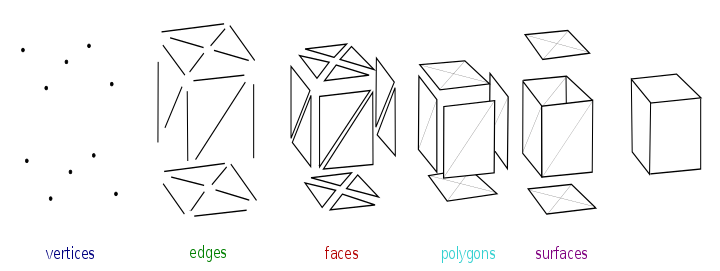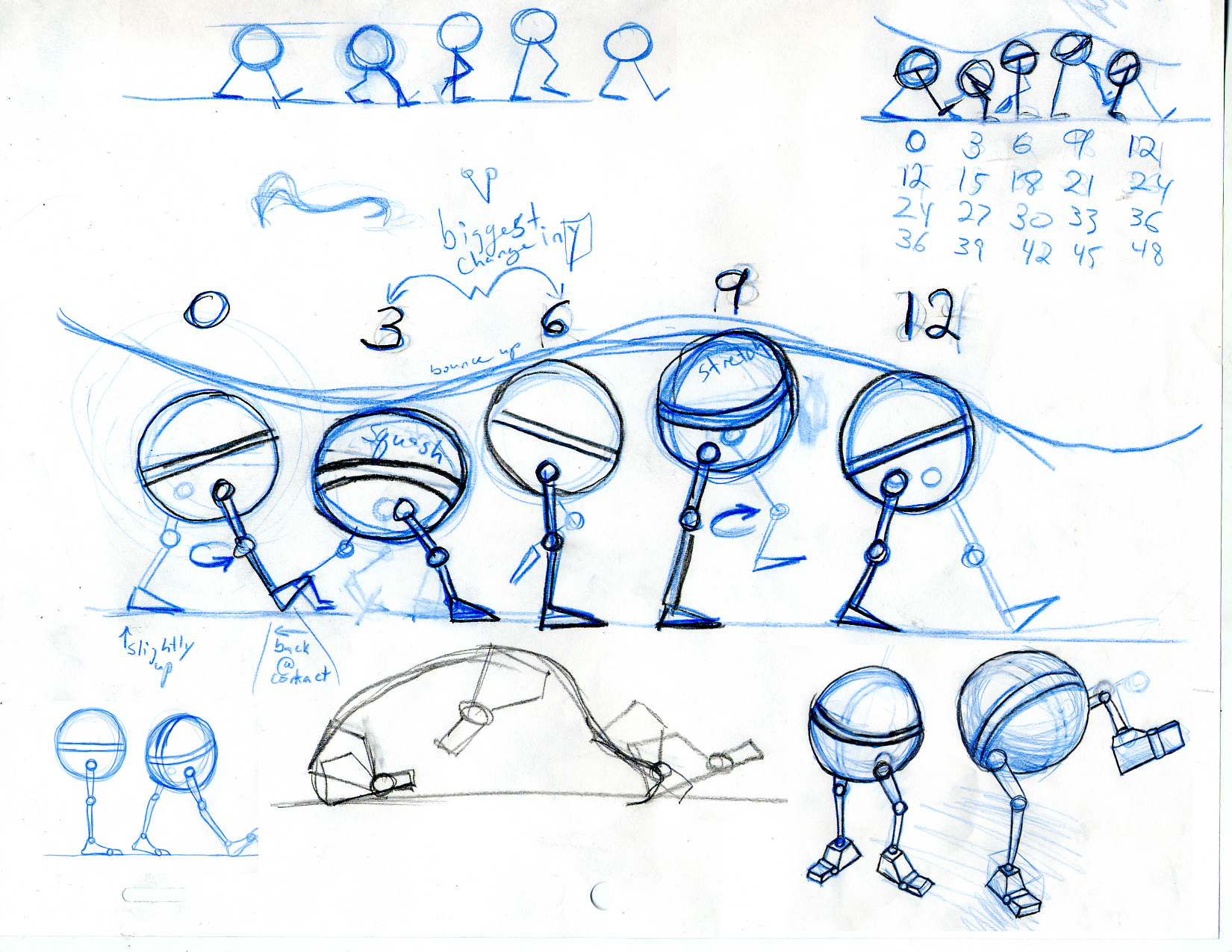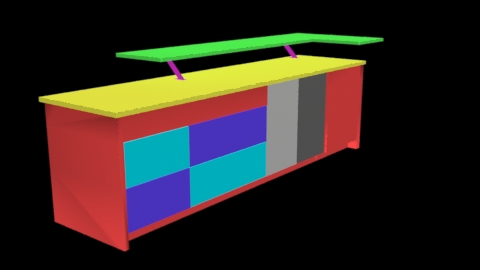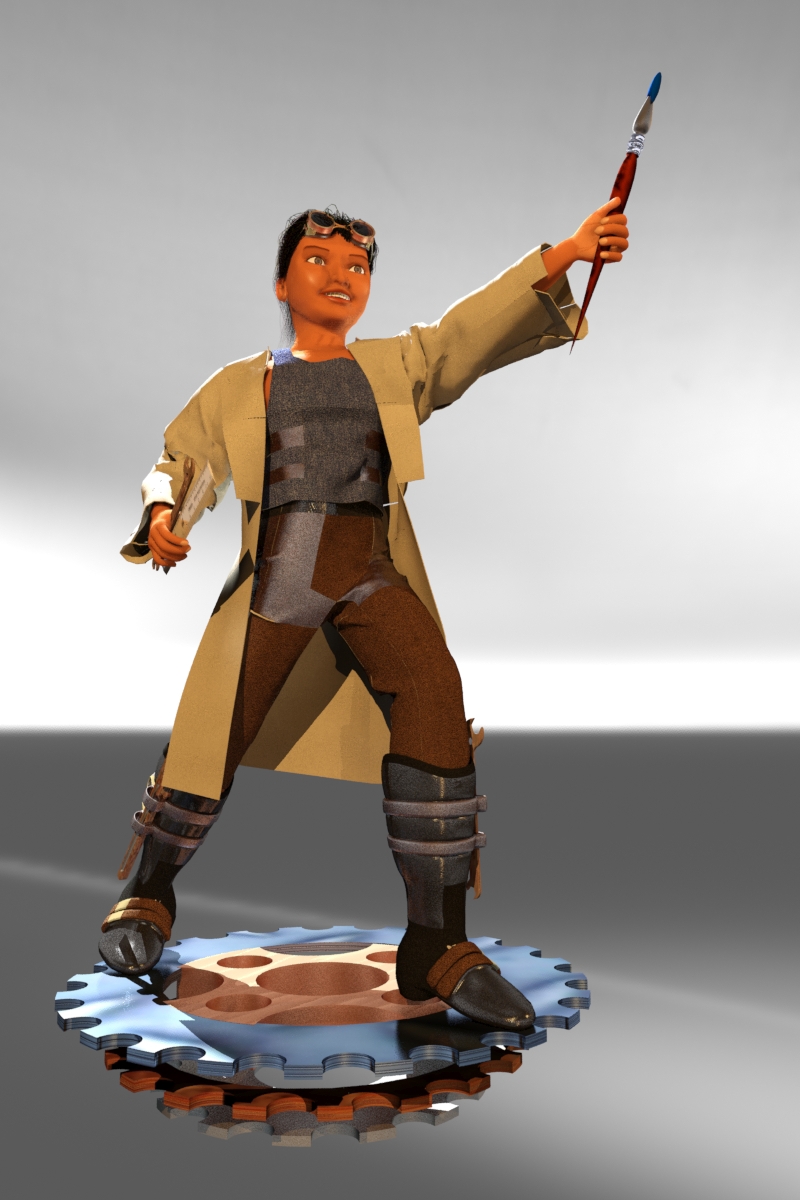Recently, I got a letter from a middle school student who was doing a report on careers and wanted to know about computer animators. First, I was impressed that she actually found my business online. Eventually, the question made me evaluate myself, my chosen career and my associates who do the same.
Education:
|
Computer Animation Math 01: Division: This is a sketch of an animated step taken from Washington University. The numbers represent film frames, so this character will take 12 frames to complete one step. That means 24 frames for a full cycle. | Most of the younger computer animators that I know went to school for computer animation. They attended either an online or a four-year brick-and-mortar school, for animation, and got a degree in the subject. Many of us older folks don't have degrees in animation. In fact, many of us don't have degrees in computer technology or even art. My degrees are in video production and marketing, and I have a strong background in stage production.
Oddly enough, I find the skill that I depend on most in computer animation is the two years I spent as a puppeteer.
Many teachers will tell you that you need to have good grades in math to do anything on computers. Computer animation, like any other animation, does require a certain expertise in math. |
I depend greatly on math for accurate sizing, speed and rhythm of my animation. (See the Animation Story Problem.) I use division a lot because, as a designer and animator, I always find myself trying to fit something into something else. (Again, see the Animation Story Problem.) I do need to point out, however, that many of the animators that I know, myself included, were originally terrible at mathematics of any kind. That was just something we had to work through. For many of us, we didn't start producing computer animation because we loved math and wanted to make something great with it. Most of us love storytelling, and we use math to help us tell that story.
|
| Animation Story Problem: If the character enters the screen from the left at frame one, and needs to meet up with another character at the right side of the screen in 3 seconds, and the film moves at 24 frames per second, and the character must take four steps to cross the screen, that means the character must cross the screen in (24 x 3=72) frames and each step can't take more than (72 / 4=18) frames. Using the walk cycle above. What is labeled as frame 6 in the picture, needs to be frame 9 in our story problem, and frame 3 in the picture needs to be frame 4 or five in our story problem depending on what looks right. Remember, it's math, but it's also art. |
|
In the computer animation universe, everything is made of dots called vertices, lines called edges and triangles called faces. When you get enough of them together, you get an object.
Congratulations, you just built something with math!
This is all clear as mud!
Don't Panic, the computer does most of the heavy lifting for you. Still, the animator needs to master the program in which she creates, and that can take years. I've used seven different computer animation programs in my lifetime, and I've mastered none of them. The technology is always changing, and I'm always learning. That's the business. Learning doesn't stop with a degree and a job. | Computer Animation Math 02: Geometry

Image from Wikipedia
A kitchen island modeled at Novamation MEDIA |
Personality:
The personality of an animator is hard to define. Some of us work in large open animation offices where we interact with others on a regular basis, and a good extroverted personality is usually necessary in that situation. Others, like myself, work alone in dimly lit offices where we spend several hours a day staring at a screen, and trying to get the branch of a computer-generated tree to sway in just the right motion. It sounds bad, but that's just the kind of thing we love! Many of us were introverts as kids who listened to emotional music in school, played WAY TOO MANY video games, and watched entirely too much anime. (Yes, they had video games and anime way back in the 80's too.) Oh, and I almost forgot about comics! Comics are just cartoons in storyboard form, so many of us read them, collect them and even draw them. We spend a lot of time looking at each other's work to help our colleagues and ourselves get better at what we do.
Skills:
|
|
This one seems easy, but it's not as strait forward as it sounds. As I stated earlier, while computer animation is an artistic field, we don't all know how to draw. We are mostly sculptors who use light instead of stone, a mouse instead of a hammer and chisel, and little virtual triangles instead of clay. But, that's not all we do. We are also stage directors, lighting engineers and set designers. The only skill that we all seem to share is that we are all creators, and we love to share what we create.
I hope this was in some way helpful to you. I wish you luck and thanks for contacting us.
All the Best
D. A. Robinson
|




No comments:
Post a Comment